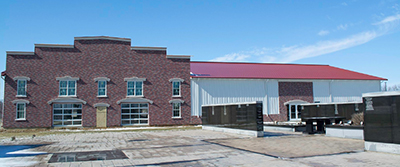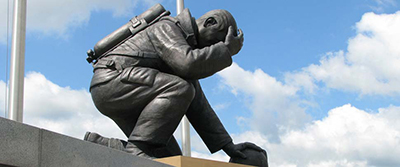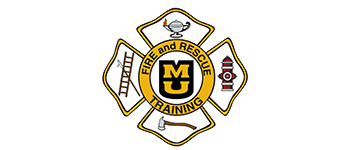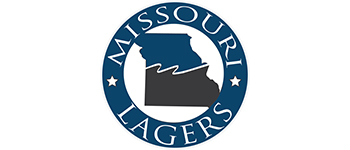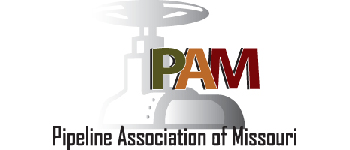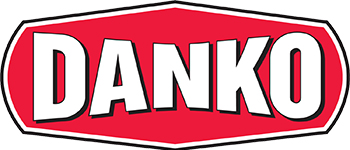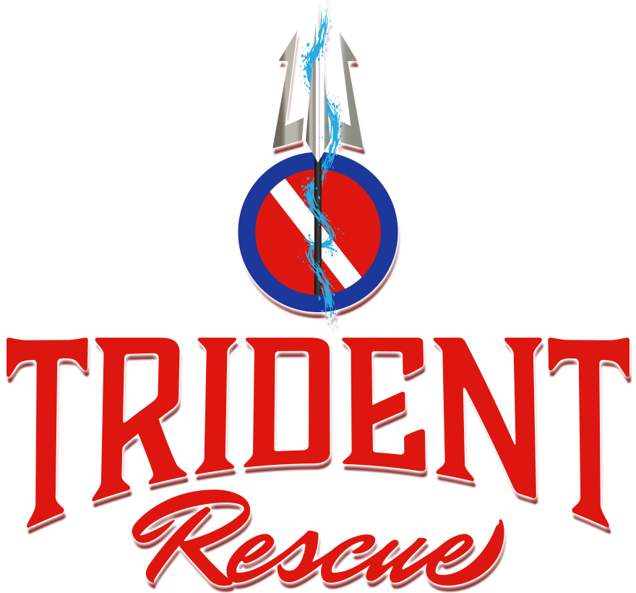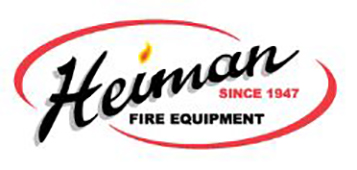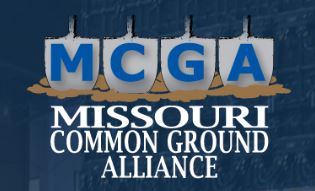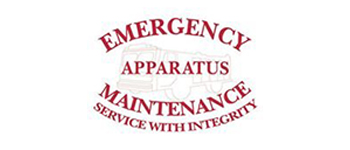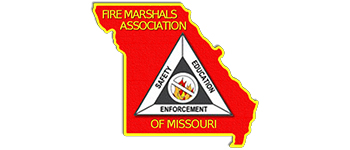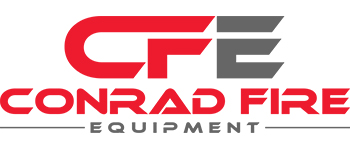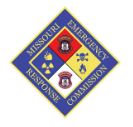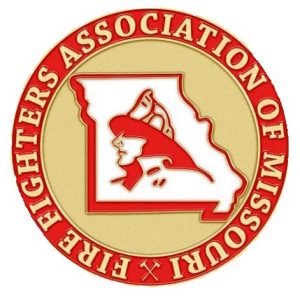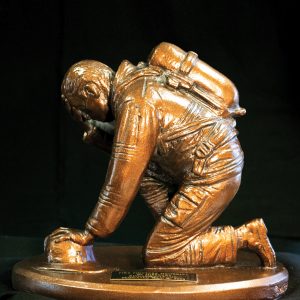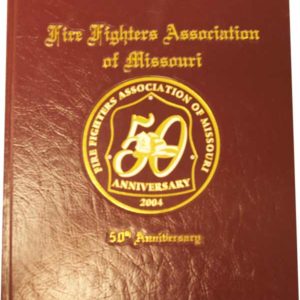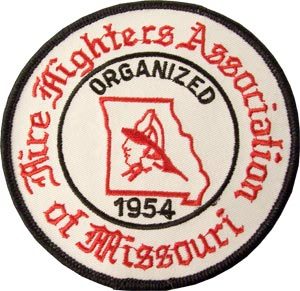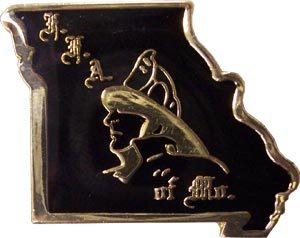Cleaning PPE
As I am writing this I have just left the Missouri State Fair Fire Department, after working a couple of days for the EMS operations. My experience with the fair was a good one. I applaud Chief RB Brown and his command staff for putting on a great fair and making our new people feel welcome. The department ran, I believe around 163 calls for the fair for a average of 16.3 calls per day. The department had a lot of new faces this year with 53 departments represented.
The department celebrated its 60th Anniversary. Yes you heard that right 60 years. The department on the first Saturday hosted a retiree day for all the people that started the Missouri State Fair Fire Department. Some of the retirees that attended were Smokey Dyer, Larry Pratt, Charlie Neubert, Don Whilmesher, Past President Kenny Hoover, Bill Westhoff, Jim Casey and Jim Henry. It was a pleasure as your 2nd Vice President to shake hands with these retirees and to hear the stories of how the department started and what it is today. Thank you, gentlemen, for what you have started it has not gone unnoticed.
Now on to the heart of my article, as you have seen in the previous articles, I have spoke what is dear to my heart, women in the fire service and firefighter cancer. This article I am going to expand a little on the cancer front, I am going to talk about taking care of the one thing that protects us. Our PPE.
Turnout clothing represents an investment for the fire department, but more importantly it can be the difference between adequate protection and injury for firefighters. It was not so long ago that firefighters prided themselves on heavily soiled and well-worn clothing as an indication of fireground experience. It was thought that the dirtier the clothing, the more seasoned the firefighter.
Fortunately, this attitude has changed. Keeping clothing clean and properly maintained is not only a way to extend the life of the clothing, but also the firefighter.
Specific procedures for care and maintenance generally come from the clothing manufacturer. Nevertheless, it is up to the individual firefighter to be cognizant of the condition of his or her gear and keep that clothing clean and properly maintained.
Firefighters must become familiar with their clothing. This familiarity helps firefighters maintain a sense of awareness when changes have occurred that might affect the clothing’s performance. NFPA 1851 indicates that gear should be inspected after each use and go through an advanced inspection at least once a year.
While NFPA 1851 permits the department to determine what constitutes “use,” it is important to carefully examine gear after the firefighter has been exposed to fireground contaminants or encountered other hazardous substances.
Some damage will be obvious, such as discoloration of the outer shell — often caused by high heat exposure resulting in the loss of dye. Rips, punctures, opened seams and loose trim are obvious signs of wear and tear, but several types of damage may be less evident. For this reason, some departments will specify a means of inspecting inside the thermal liner, moisture barrier combination.
However, even with the ability to examine the inner layers, not all failures are visual. The film of the moisture barrier can delaminate or develop pin holes with or without visual changes and seam tape can come loose.
Similarly, damage can occur to some thermal barriers without any sign of missing quilt stitching. Other changes can take place that cannot be discerned without testing.
The best practice for inspecting clothing is to look at its condition often and to take note of any changes. If you cannot determine where degradation or a harmful condition has taken place, it is best to show your clothing to your supervisor. NFPA 1851 does provide field tests to help ascertain the condition of the gear.
Firefighter protective clothing must be kept clean to ensure its proper performance. Dirty gear carries less insulation, is more likely to conduct heat and electricity, lacks liquid shedding properties and can become potentially flammable. Moreover, many fireground contaminants are carcinogens and skin toxic chemicals.
Turnout clothing needs to be cleaned regularly to prevent these problems. Yet, improper cleaning can also destroy clothing or worsen its protective performance.
There are three types of cleaning: routine, advanced and specialized cleaning defined in NFPA 1851. Routine cleaning is performed after any fireground use where soiling has occurred. It involves brushing debris from the clothing, rinsing it with water, and applying spot cleaning as necessary. It is a good idea to inspect the condition of the clothing during routine cleaning.
Advanced cleaning is more thorough and must be done at least every six months or more frequently, depending on the use and condition of the clothing. Advanced cleaning involves hand washing the clothing in a utility sink or machine washing.
In either case, proper procedures must be followed. Machine washing is best done in a front loading washer/extractor to limit damage caused by top-loading machine agitators.
Proper drying is equally important. As turnout clothing is thick and bulky, drying is slow. Nevertheless, machine drying at high settings will quickly ruin this clothing, even though rated for high-temperature use. If machine drying is selected, be sure to use a no heat setting.
It is best to hang clothing for air drying inside and away from direct light, especially sunlight. The UV radiation in sunlight breaks down some of the fibers in turnout clothing. Drying time can be reduced by using a fan with heated air over the clothing.
In some cases, clothing can be contaminated by chemicals or blood-borne pathogens. When this occurs, the turnout clothing must go through a specialized cleaning, which will be covered in a future column. Many departments also use contract facilities for cleaning their clothing.
Turnout clothing can only be repaired by a facility that has experience in repairing turnout clothing or by consultation with the manufacturer. Here again, NFPA 1851 provides some guidelines for field repair and strongly suggests that any outside repair facility be recognized by the clothing manufacturer and uses the proper materials for any repairs.
Improperly repaired clothing can be unsafe, potentially resulting in failure. Always check with the manufacturer before any repair.
Proper storage is a must for maintaining turnout gear. The space should be away from direct light, especially sunlight, contaminants and objects that can physically damage clothing.
The space should also be well ventilated. Never store firefighter clothing in living quarters or at home
Deciding when clothing must be removed from service is difficult and requires the judgment of experienced persons. The general rule of thumb is that clothing should be retired when it’s considered unsafe, cannot be effectively cleaned or decontaminated, or the cost of repairs is more than half of the original purchase price.
The lifespan of protective clothing is entirely dependent upon the types of exposures, frequency of wear and the care and maintenance that has been provided. However, the service life of turnout gear can be drastically cut short — as short as two to three years — if it is heavily used, worn or improperly maintained.
Here is some things to consider during a routine and advanced inspection of your PPE
- Conduct a routine inspection of garments after each use. Look for:
- Soiling
- Contamination
- Physical damage
- Damaged trim
- Damaged closures and hardware
At a minimum, conduct inspection every 12 months or whenever routine inspections indicate that a problem may exist. Advanced inspection areas include:
- Moisture barrier and seam sealing integrity
- Fit and coat/pants overlap
- Seam integrity including broken or missing stitches
- Material integrity for loss of strength due to UV or chemical exposure
- Loss or shifting of thermal liner material
- Wristlet integrity and functionality
- Reflective trim and Velcro integrity, attachment and functionality
- Label integrity and legibility
- Liner attachment systems
- Closure system functionality
While cleaning your PPE perform the following steps after each use.
- Brush off debris
- Rinse with water
- Lightly scrub item with soft bristle brush, if needed
- Spot clean, if needed
- Inspect item
- Clean again as necessary
As least every 6 months, subject clothing to more through cleaning, precautions include
- Examine manufacturer’s label
- Do not use chlorine bleach or chlorinated solvents
- Use cleaning solutions with a pH range of not less than 6.0 and not greater than 10.5
- No high-velocity water jets such as power washers
- Clean and decontaminate protective ensembles separately from non-protective items
- Where shells and liners are separable, clean and decontaminate those items with like items (i.e., shells with shells and liners with liners)
If you are a department that cant afford a PPE washing machine here is the procedures to use when cleaning in a sink.
- Do not overload sink.
- Pre-treat if necessary.
- Water not to exceed 105 degrees.
- Add cleaning solution or detergent.
- Wear protective gloves & eye/face splash protection.
- Scrub gently using a soft bristle brush. Use care with moisture barrier assemblies.
- Drain water from sink.
- Refill sink; agitate gently using gloved hand or stir stick.
- Gently wring out garments and drain water.
- Repeat 7 and 8 until garment is rinsed.
- Dry the elements.
- Inspect and rewash if necessary.
- Rinse out sink.
For drying if you are using air drying use these procedures
- Place elements in an area with good ventilation.
- Do not dry in direct sunlight.
If you are a department that has a PPE washer follow these procedures,
- Do not overload the machine.
- Pre-treat if necessary.
- Fasten all closures, including pocket closures, hook and loop, snaps, zippers, hooks and dees.
- Turn garment inside out and place in a mesh laundry bag.
- Wash temperature not to exceed 105 degrees.
- Add detergent.
- Run one complete cycle, rinsing at least twice.
- Dry the elements.
- Inspect and rewash if necessary.
- If the machine is to be used for other than protective ensemble elements rinse out machine by running while empty through a complete cycle with 120 degrees to 125 degrees water and detergent.
For Machine Drying procures,
- Do not overload the machine.
- Fasten all closures.
- Turn garments inside out and place in a mesh laundry bag.
- If the dryer has a no-heat option, use it.
- If heat must be used, the basket temperature shall not exceed 105 degrees.
- If heat is used, remove garments before they are completely dry.
I have now given everything you need to take care of your PPE and yourself. If the FFAM can be of any assistance or your department would like the FFAM to attend your event, please reach out to us. My email is grant_oetting@yahoo.com or you can reach me by cell phone 660-229-4525, if I don’t answer please leave a voice mail and I will get back to you. As always it is a pleasure to serve you. Stay safe my brothers and sisters, until next time.





